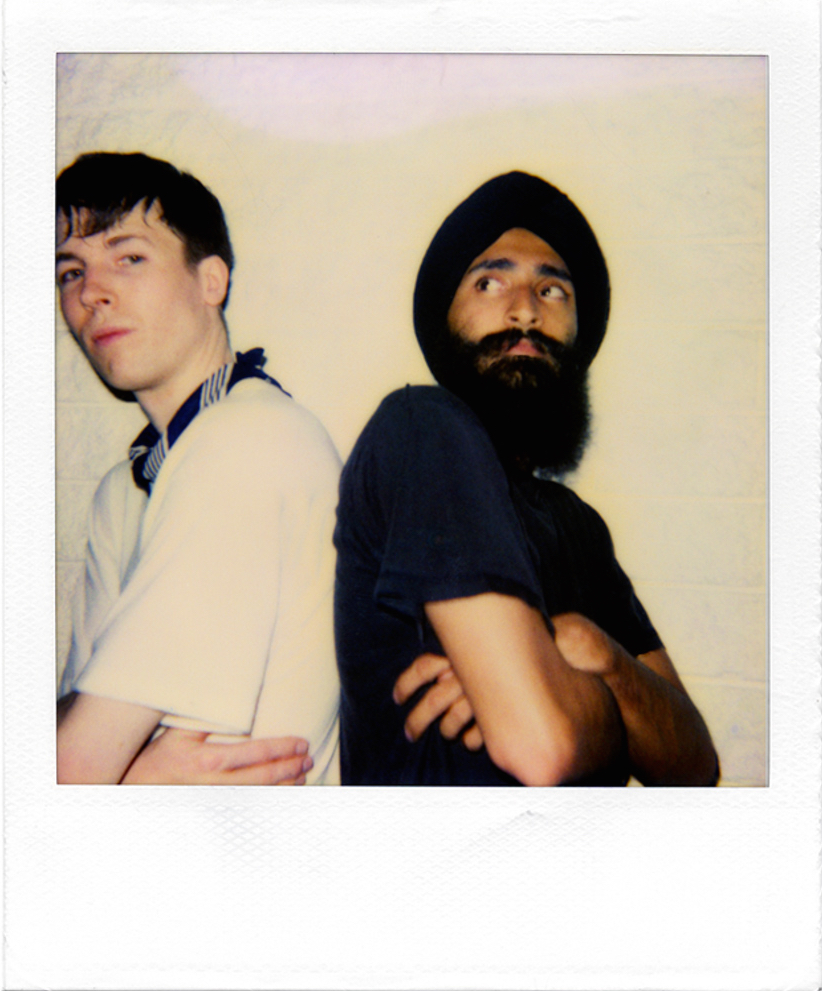Ryan McGinley’s early photographs tell a story about a hedonistic and free-wheeling New York that has all but disappeared, one of derelict downtown apartments and long nights at after-after parties in Chinatown. McGinley obsessively documented his tight-knit group of friends, the creative kids who made (and still make) the city what it is. There they are, making out in a bathtub. There they are again, shirtless and bombing a wall. With new attention on these photographs from 1998 to 2003, thanks to an MCA Denver exhibition and book called The Kids Were All Right, the characters of this distant version of the city are larger than life once again, and we’re wondering: where are they now?
Some of their biographies are well-known. Two of McGinley’s best friends and favorite subjects, Dan Colen and Nate Lowman, also went on to be art world stars. So did the late Dash Snow, who tragically succumbed to his unabashed appetite for drugs in an East Village hotel in 2009. These three guys often dominate the conversations surrounding this early work, but the 1500 little-seen polaroids published reveal the huge range of portraits that McGinley shot. Actors, writers, filmmakers, musicians, and flaneurs are at their most uninhibited and relaxed for Ryan. These pictures are a time capsule of New York creativity. Here are updates on some of McGinley’s most charismatic subjects.
Jack Walls
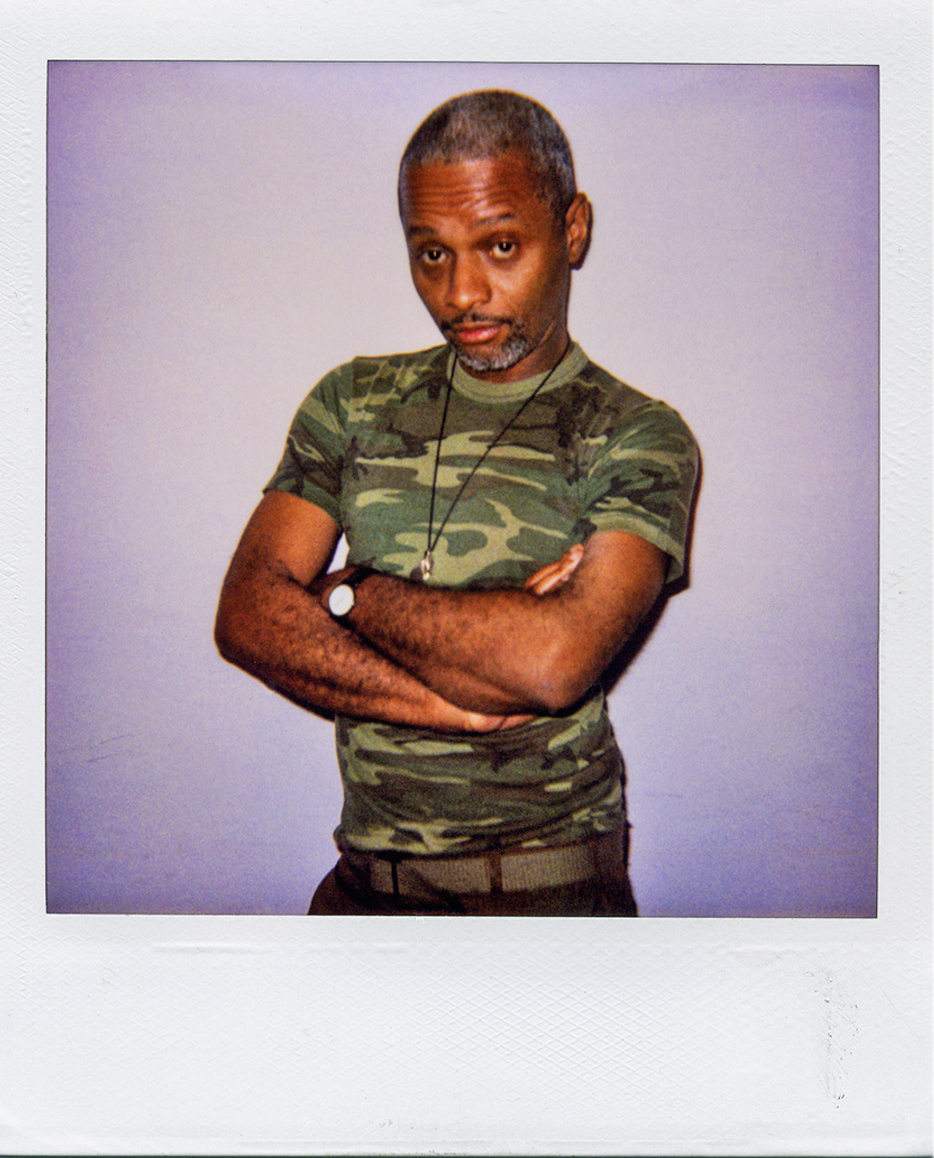
By the time Jack Walls met McGinley, he was already famous as a photographic subject and long-time lover of Robert Mapplethorpe. Walls immediately connected with McGinley’s approach and became a kind of mentor to the young artist: “He was interested in photography as an art form,” writes Walls in The Kids Were All Right. “If you were one of his friends, you became one of his subjects.” Walls, however, didn’t fancy himself an artist back then; it was McGinley’s success that emboldened him to pursue his own art. Walls lives in upstate New York and has gone on to make paintings and collages, most recently showing black and white paintings at Hionas Gallery in March. In 2010, Walls premiered his epic multimedia art piece-cum-poem The Ebony Prick of the White Rose’s Thorn, an anguished rumination on the nature of love and loss. “Being in Ryan McGinley’s pictures made me relevant to a whole new generation of younger artists,” writes Walls in an email.
Leo Fitzpatrick

In 1992, Larry Clark spotted a 14-year-old Leo Fitzpatrick screaming and cursing while trying to land skateboarding tricks in Washington Square Park and cast him as the lead in Kids. Fitzpatrick grew up close to the New Jersey hometowns of McGinley and Colen, and the three of them knew each other from the local skateboarding community. According to Fitzpatrick in TKWA, he and McGinley worked at rival skateshops, and he likes to joke that “he knew Ryan before he was gay.” Fitzpatrick has had indie success since then as both an actor and artist. He’s appeared in films (Larry Clark’s Another Day in Paradise and Bully) and television (The Wire, Sons of Anarchy). In 2012, Fitzpatrick co-founded the Home Alone 2 project space on Forsyth Street with artists Nate Lowman and Hanna Liden, where they would only show art but not sell it. Money soon became an issue, however, and the gallery closed. “Eventually, we got sick of paying the rent,” said Fitzpatrick in an interview with Forbes. Later, Fitzpatrick was asked to bring the Home Alone concept into Marlborough Chelsea in the form of The Viewing Room, a space in the back of the gallery. Like Home Alone 2, The Viewing Room shows artists of Fitzpatrick’s generation, like Jenni Jieun Lee and Graham Collins, alongside older artists like conceptual painter/photographer Betty Tompkins.
Tim Barber

Photographer and curator Tim Barber was introduced to McGinley in New York by the artist Terence Koh. Barber soon became one of Ryan’s favorite subjects, appearing skinny dipping at the Coney Island beach; with a skateboard; lying in bed. Barber, who was already taking pictures, got an early boost when McGinley put one of Barber’s early images on the cover of Vice in 2002. McGinley, after serving as Vice‘s photo editor from 2001 to 2003, passed his position on to Barber, who did it until 2005 when he left to concentrate on photography. While working in both a fine art and commercial context, Barber is also a passionate curator. In 2005 he launched the Tiny Vices website which showed photographs and art by the likes of McGinley and photographer Asger Carlsen. He later expanded on the Tiny Vices concept with the now-defunct Time-and-Space.tv, a website that collected portfolios of over 70 artists. According to his website, Barber spent much of 2016 taking photographs on a wooded hillside in upstate New York. He’s also shot for magazines like Numero and Apartamento, and collaborated with Chairlift on album covers.
Lesley Arfin
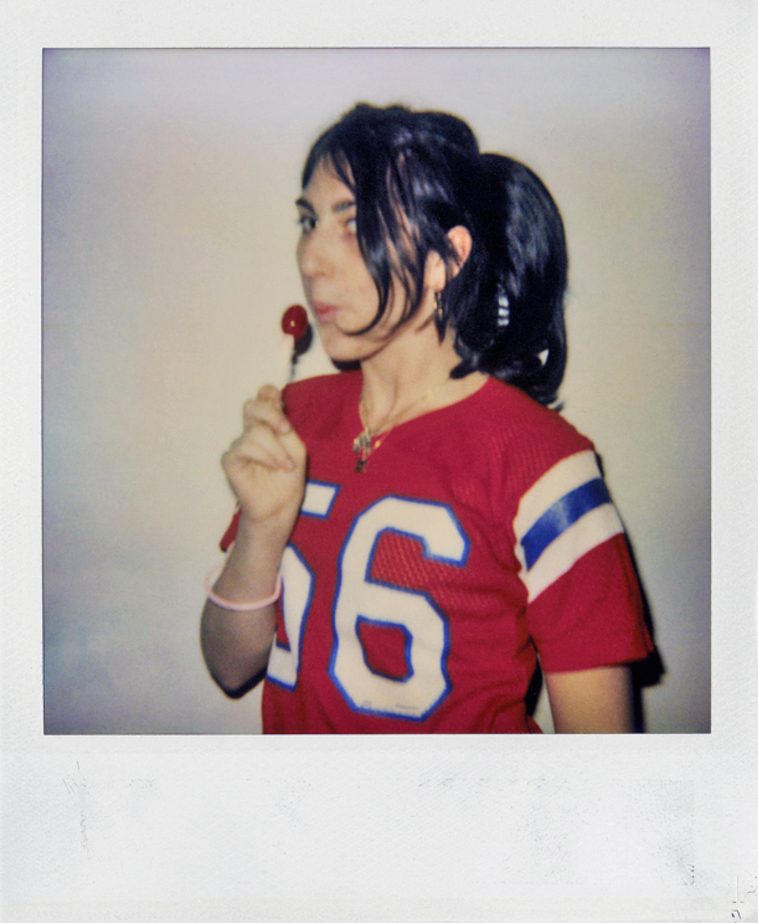
Out of all of McGinley’s early subjects and NYC cool kid friends, it is perhaps the writer Lesley Arfin whose career has evolved the furthest beyond the downtown art world. Arfin’s ‘Dear Diary’ column for Vice, comprised of her early diary entries, became a cult classic in book form. Among the book’s many fans was Lena Dunham, who gave Arfin a TV writing gig on Girls. Arfin wrote the infamous Season 1 episode “Vagina Panic” in which Jessa spends her day drinking and having bathroom sex to avoid the reality of her pregnancy. Though Arfin didn’t stay for Girls‘s second season, she developed a close relationship with the show’s producer and comedy king Judd Apatow. These days, you can catch Arfin’s sardonic voice on her romantic comedy series Love, which she co-created with Apatow and her husband, the comedian Paul Rust.
Hanna Liden

In one of Ryan’s polaroids of artist Hanna Liden, her face is tilted towards the camera and enveloped in a cloud of smoke. It’s a fitting image for a rather mysterious figure. Although she was definitely part of the more excessive aspects of the early aughts art scene, her photographs sought a different kind of extremity than McGinley’s and Snow’s. While they were documenting the debauchery of their friends, Liden was staging evocatively frightening images that seemed to emerge from her imagination rather than her experience (i.e., masked naked women posing against a harsh and unforgiving natural landscape). Liden was represented by the short-lived Rivington Arms Gallery, alongside the likes of of fellow boundary-pushing artists like Leigh Ledare and Carter Mull. When Snow died in 2009, Liden was with his partner Jade Berreau when they found found his body. Liden’s work remains compelling: In 2010 she held a show of photographs at Half Gallery that looked like staged Satanic seances, and her 2015 public art sculpture “Everything” at Hudson River Park was a stack of giant bagel forms. Most recently, her sculpture work was featured in a floral themed group show at Eric Firestone gallery, curated by fellow McGinley subject Agathe Snow.
Lizzy McChesney
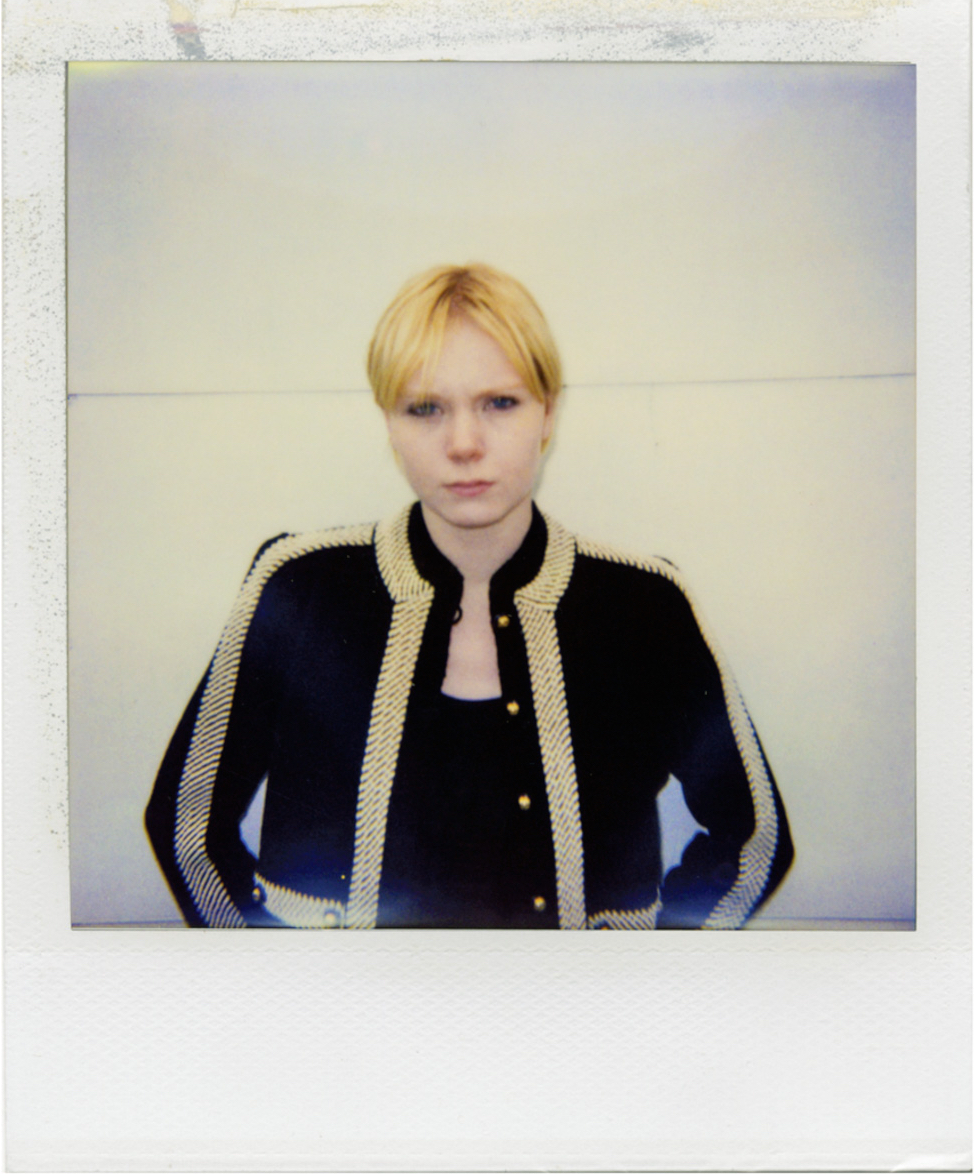
One of Ryan McGinley’s most iconic portraits, Lizzy, shows the young Lizzy McChesney (aka Lissy Trullie) nude against a backdrop of celestial wallpaper and graffiti. Lizzy was studying graphic design at Parsons in the early 00s when she began hanging out with musicians like Donald Cumming of The Virgins and Adam Green of The Moldy Peaches (watch her and Green do an epic cover of Biz Markie). Once described by New York magazine as “a 25-year-old ambisexual art student turned model turned dishwasher turned janitor turned D.J. turned future of New York rock,” Trullie came up in the post-Strokes New York rock scene. She released her insanely catchy garage pop solo debut EP in 2009 and a self-titled full-length in 2012. Most recently, Trullie formed Zipper Club with Cerebral Ballzy’s Mason James, and debuted the James Iha- produced single “Going the Distance” in 2016. According to the band’s website, Zipper Club is putting touches on its debut album and is playing London on May 16.
Jason Dill (left, with Leo Fitzpatrick)
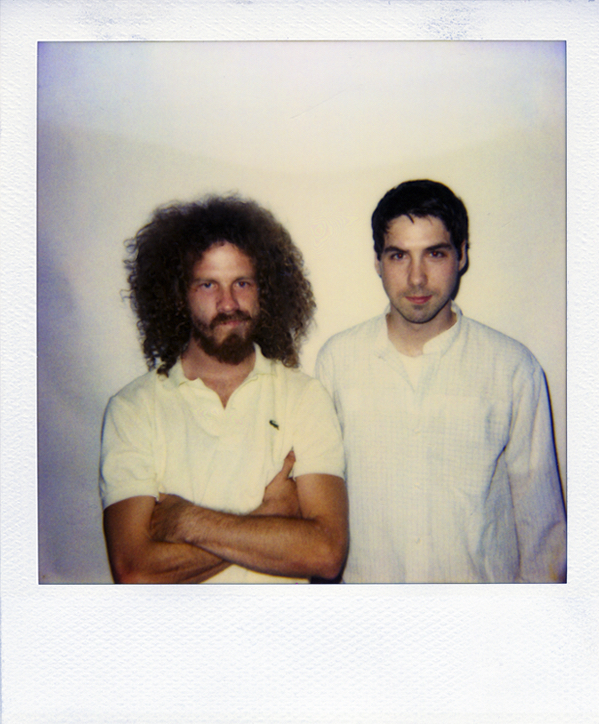
An icon in the world of professional skateboarding, pro skater Jason Dill was also one of Dash Snow’s friends and an early subject of both his and McGinley’s polaroids. In the early 2000s, Dill developed his cult Fucking Awesome streetwear line, with hoodies and t-shirts decorated in his dark graphic designs. He was briefly hospitalized with gastric hemorrhage and jaundice in the late-2000s, where he was visited by Dash Snow, and swore off alcohol. When he started to disagree with the creative direction of his board sponsor Alien Workshop in 2013, Dill moved from New York back to L.A. and developed Fucking Awesome into a full-fledged skateboarding brand. He recently appeared in Lesley Arfin’s Love series as someone receiving a stick n’ poke tattoo that says “cancer.”
James Ransone
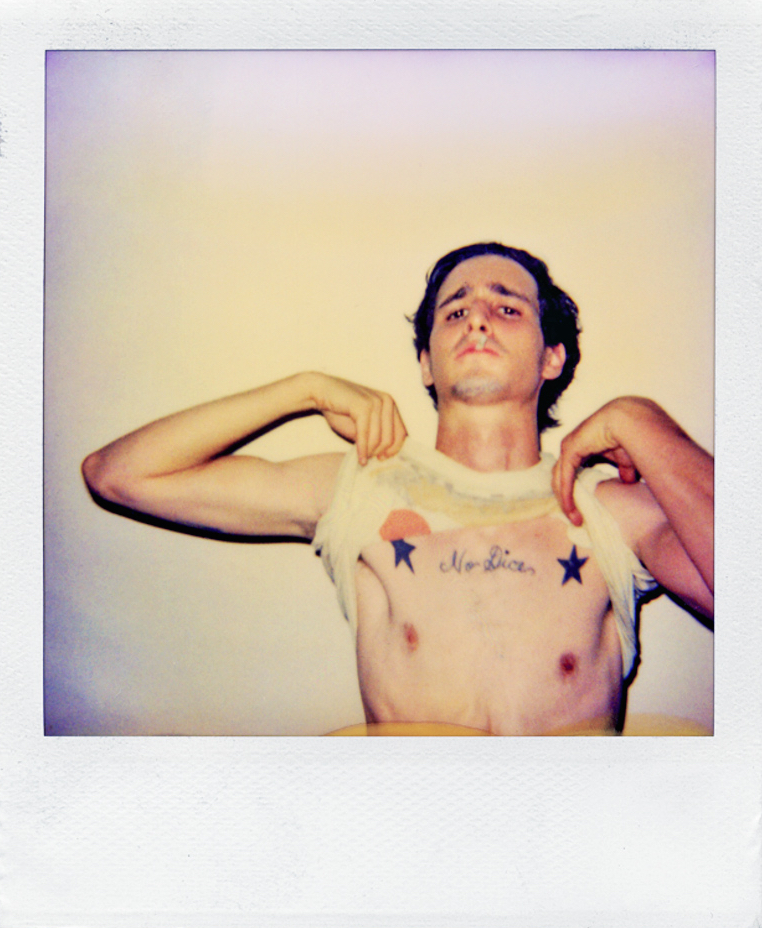
Actor James “PJ” Ransone attended SVA for one year before dropping out and embedding himself into downtown culture. Struggling as an actor and musician, it was Ransone’s casting in Harmony Korine’s film Ken Park that brought him into McGinley’s extended family. He was formidable as Ziggy Sobotka in the second season of The Wire, but the debauchery of the downtown art world caught up with him and he found himself crippled by heroin addiction and $30,000 in debt. He got sober after befriending two marines while filming the HBO mini-series Generation Kill. Since then, Ransone has enjoyed steady success working in horror films like Sinister and instant-classic indie films like Tangerine.
Amy Kellner
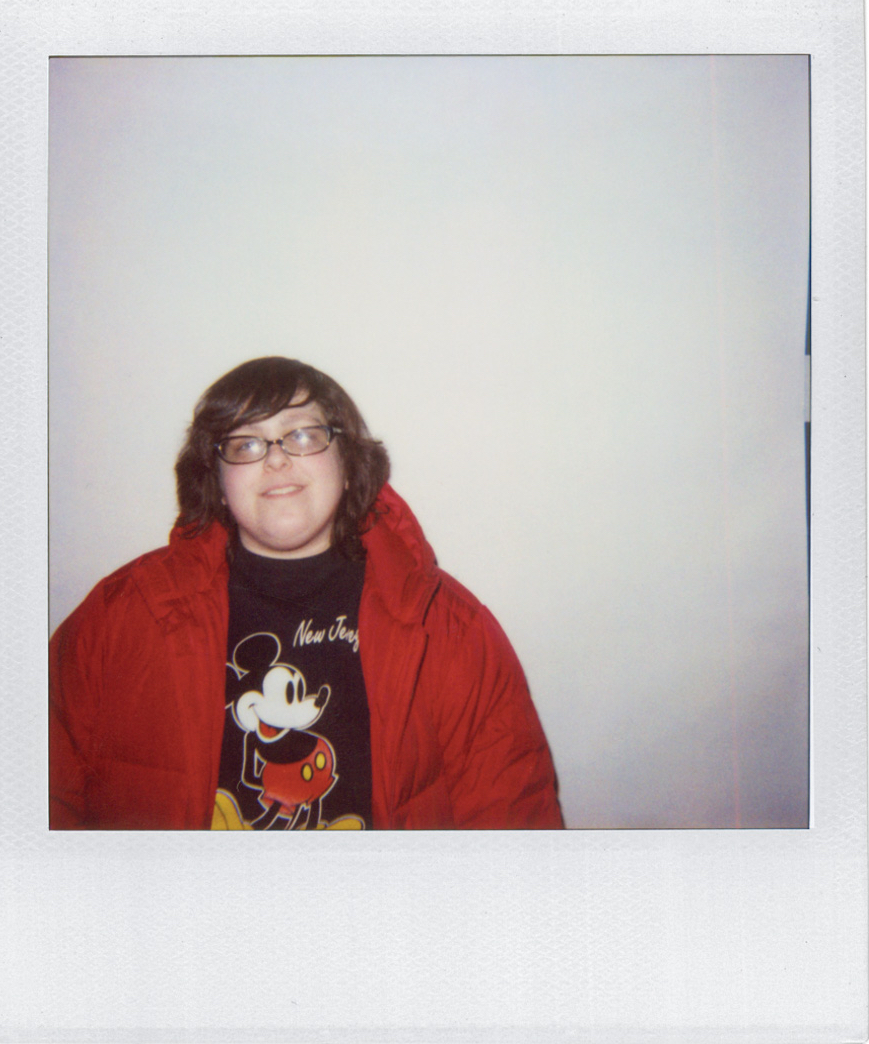
Writer and editor Amy Kellner became lifelong friends with McGinley while working at Index in the late 90s and was present for some of the most legendarily debauched McGinley stories. Kellner’s adorably intimate photo blog “Teenage Unicorn” also chronicled their downtown scene. Now defunct, it was one of the great early personal blogs, with snapshots of parties and gallery openings along with personal stories. Kellner worked as Managing Editor of Vice before starting her current position as Associate Photo Editor of The New York Times under the legendary Kathy Ryan. Amy’s pretty low-key, but she’s still Ryan’s bestie and supports him at shows like the Denver opening of The Kids Were All Right.
Credits
Text Adam Lehrer
Photography courtesy and copyright Ryan McGinley
